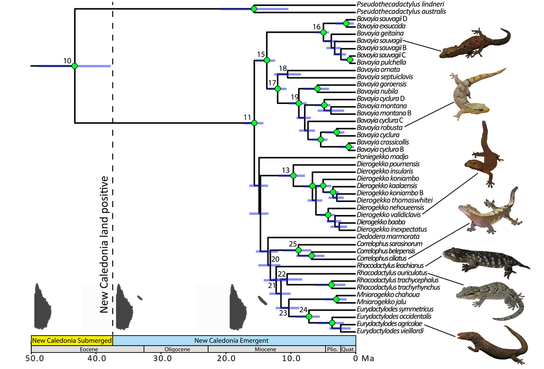Phylogenetics, Macroevolution, Biogeography, and Herpetology
Welcome to the Skipwith lab in the Biology Department at the University of Kentucky. Research in this lab focuses squamate reptiles to understand the mechanisms of diversification within lineages. Specifically, the processes impacting the tempo of speciation and phenotypic change, the relationship between speciation and phenotypic diversification, and the phenomenon of convergent evolution. These are particularly pertinent subject areas when it comes to understanding the forces responsible for the generation of adaptive radiations. To date, I have used a variety of techniques, including phylogenomics and CT-scanning, and analytical methods to better understand the processes governing macroevolutionary dynamics.
Lab News: Now Looking for a Postdoc 2022/23!
My lab is currently looking to recruit one postdoc with strengths in handling whole genome data and bioinformatics. The Skipwith lab will soon be generating whole genomes of geckos to examine the genetic mechanisms controlling body size and morphogenesis, particularly the tempo of molecular evolution in the face of ecological opportunity. Please contact me ([email protected]) if you are interested.
Featured Research
|
All critters are welcome, even molluscs
Lucy Chang and I have a manuscript on bivalve evolution coming out in Paleobiology soon, so keep a look out. Here, we combine molecular phylogenetics, fossil occurrence data, and community assembly methods to test whether competitive exclusion or environmental filtering influenced the composition of the San Joaquin Basin (SJB) bivalve community. New velvet gecko species!
Chris Jolly, Paul Oliver, and I recently described a new Australian velvet gecko, Oedura nesos, from the island of Groote Eylandt. This species is morphologically similar to other certain other species from the marmorata complex on the mainland, but is very distinct genetically. This finding supports that this small island from the northwest corner of the Gulf of Carpentaria serves as an area of endemism for various squamates. Ecomorphological diversification of snakes
For the last two years, I have been working at the American Museum of Natural History with Frank Burbrink on the phenotypic evolution of unique group of snakes, the pseudoxyrhophiine lamprophiids of Madagascar. More simply, the Malagasy gemsnakes. I've made the transition from mostly phylogenomic work to working with high-res micro CT scans to examine ecomorphological diversification. We've found that while the Malagasy gemsnakes have generated an astounding degree of ecological diversity, they've managed to replicate phenotypes seen elsewhere in unrelated colubroids (advanced snakes). Australasian gecko phylogenomics
The first chapter of my dissertation just came out in Molecular Phylogenetics and Evolution. Here, we looked at the entirety of the Diplodactyloidea, the group of geckos that includes pygopods and the New Caledonian radiation, using a massive phylogenomic dataset. We implemented over 4,000 Ultraconserved Elements to fully resolve relationships in this clade of over 200 . species. Comparisons of topological metrics support that this is the most well-supported phylogenetic estimate for this clade and that the relationships recovered here differ markedly from those proposed in earlier, Sanger-based, molecular studies. Divergence dating supports multiple mid-Cenozoic over-water dispersal events into Oceania but fails to support any mass extinction events, something that has been proposed previously. New Caledonian gecko diversification
My interest in herpetology began with my Masters at Villanova University with Aaron Bauer. I had the good fortune of working on the phylogenetics of New Caledonian diplodactylid geckos, a diverse radiation of 36 described species. Well, that study is finally out! We present a revised phylogeny using a multilocus dataset implementing multispecies coalescent methods. Turns out this group is very young, much younger than previously thought and probably dispersed to New Caledonia sometime during the Miocene. We also demonstrate that this clade experienced rapid initial speciation followed by a gradual slow down. |
|








